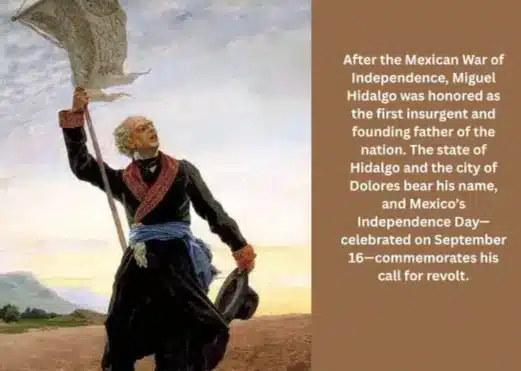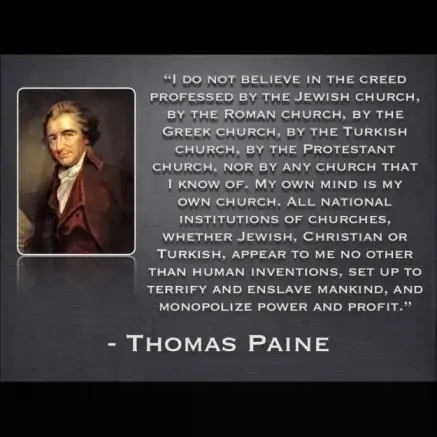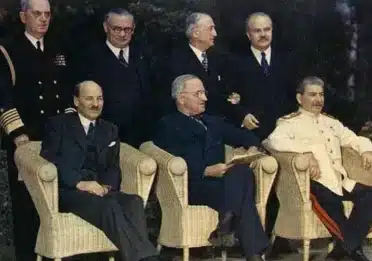Anglo-French Rivalry in the New World: Navigating History
The French and Indian War and the subsequent Treaty of Paris are two pivotal events that played a crucial role in shaping the geopolitical landscape of North America in the 18th century. These interconnected events marked a significant turning point in the struggle for dominance between European powers in the New World, particularly between Great Britain and France.
The war came to be known as the French and Indian War because British colonists, who had previously experienced a war named King George’s War in the 1740s, named this particular conflict after their rivals. Since the main opponents in this war were the French and various Native American tribes aligned with them, it became commonly referred to as the French and Indian War.
While the war was primarily fought in North America, it was part of a larger global conflict known as the Seven Years’ War, (lasted from 1756 to 1763) which spanned multiple continents and involved major European powers.
 |
| Source of Image: Google, Foundation of the city of Quebec by Samuel de Champlain in 1608 |
The Treaty of Paris, alternatively referred to as the Treaty of 1763, was formally agreed upon and signed on February 10, 1763. It involved Great Britain, France, Spain, and Portugal. The treaty came about because Great Britain emerged victorious in the Seven Years’ War against France and Spain. It officially put an end to the Seven Years’ War, which is known as the French and Indian War in North America. The treaty marked the beginning of a period when Britain started to gain significant power beyond Europe.
Under the terms of the treaty, France ceded a significant portion of its North American territories to Britain. This included the vast region of Canada and all of its claims east of the Mississippi River, except for the city of New Orleans. However, it is important to note that France did not cede Quebec specifically; rather, the entire region of Quebec came under British control. This transfer of Quebec marked the beginning of British rule in the area, laying the foundation for the future development of Canada.
This article delves into the significant events of the French and Indian War and the subsequent Treaty of Paris. By providing historical context, it highlights the intense competition for dominance in the New World, specifically in the context of North America.
💻 Table of Contents:
- French Exploration and Colonization: A Journey of Discovery and Struggle
- Causes of the French and Indian War
- Clash of Empires: British Victory in the French and Indian War
- Outcome of the French and Indian War
- Legacy of French Exploration and Colonization
French Exploration and Colonization: A Journey of Discovery and Struggle
In the late 15th century, France, under the strong leadership of its monarch, began to assert its authority and expand its influence both within Europe and beyond. As the monarchy united its power, France emerged as one of the strongest nations in Europe, eager to challenge other European powers such as England, Spain, and the Netherlands for dominance in the New World.
By the early 1600s, France was prepared to start establishing settlements in the New World, especially in present-day Canada. The French explorers came to America with the aim of expanding the fur trade, seeking a river passage across North America for a trade route to Asia, exploring and securing territory, and establishing Christian missions to convert Native peoples.
Earlier explorers like Giovanni Verrazano and Jacques Cartier had established French ownership in the region, paving the way for future settlements. Despite initial difficulties, including unsuccessful attempts to create permanent settlements in Florida and South Carolina, France remained determined to gain a strong presence in North America.
 |
| Image Source: Google, The Battle of Quebec |
When Henry IV became king, it signaled the start of a fresh era of French exploration and colonization. Samuel de Champlain was chosen as a significant figure in this attempt. Champlain, often addressed as the “Father of New France,” played a pivotal role in establishing permanent settlements, including Port Royal in Acadia and Quebec. Despite facing numerous challenges, including harsh living conditions and centralized control from France, Champlain’s efforts paved the way for further expansion and exploration.
French exploration extended beyond present-day Canada, with bold leaders like Louis Joliet and Father Marquette venturing into the Great Lakes region and the Mississippi River valley. The greatest achievement came when Sieur de La Salle explored the Mississippi River, claiming the large area in the middle of the continent for King Louis XIV and naming it Louisiana.
The name “Louisiana” is derived from the French name “La Louisiane,” which was given to the territory in honor of the French King Louis XIV. The name itself consists of two parts: “Louis,” which is a given name of Germanic origin meaning “famous warrior,” and “iane,” a suffix used to form place names in French. Therefore, the name “Louisiana” can be interpreted to mean “Land of Louis” or “Land belonging to Louis.”
Despite setbacks and challenges, including conflicts with other European powers and indigenous tribes, French colonization efforts persisted. The establishment of forts and settlements, including New Orleans, served as anchors for French expansion and trade networks in the region.
Causes of the French and Indian War:
The French and Indian War was primarily sparked by competing territorial claims and economic interests in the Ohio River Valley region of North America. Both the British and French sought control over valuable fur trade routes and strategic territories in the region. This led to escalating tensions as each side sought to assert its dominance and expand its influence in the New World. The desire for territorial expansion and economic supremacy ultimately laid the groundwork for the outbreak of hostilities between the British and French colonies.
 |
| Image Source: Google, Coronation of Henry IV |
Clash of Empires: British Victory in the French and Indian War
Tensions escalated as both sides sought to assert control over the region. In 1754, a clash between French forces and a British colonial militia led by a young George Washington sparked the war though the British formally declared war in 1756. The conflict quickly spread to other parts of North America, with Native American tribes aligning with either the French or the British based on their own strategic interests.
💻 You May Also Read:
- The French Revolution: Causes, Consequences and Legacy
- The Spanish-American War: Roots in US Envision of Great Power Status
- Unveiling the Treaty of Alliance: USA’s Geopolitical Journey
Throughout the course of the French and Indian War, several key battles shaped the outcome of the conflict. These included the Battle of Quebec, where British forces under General Wolfe defeated French forces led by General Montcalm, securing British control over Canada. The British victory at Quebec allowed the English to take control of most of North America, that event was the most significant in North American History.
Another significant battle was the Battle of Fort Duquesne, where British forces successfully captured the French fort, further weakening French presence in the Ohio River Valley. Additionally, the Battle of Montreal marked the final engagement of the French and Indian War, resulting in the surrender of French forces and the eventual British victory.
Outcome of the French and Indian War:
The French and Indian War came to a close with the signing of the Treaty of Paris in 1763. This pivotal agreement saw France cede its North American territories east of the Mississippi River to Great Britain. As a result, Britain emerged as the dominant colonial power in North America, gaining control over vast territories previously held by France.
The French and Indian War (1754–1763) had a significant impact on the American Revolution. The war left Britain heavily in debt, leading King George II to impose taxes on the American colonists to pay off the war debt and maintain a standing army in the Americas.
The introduction of these taxes, starting with the Stamp Act in 1765, and sparked strong resistance from the colonists that eventually culminated in the American Revolution. Furthermore, the French, still resentful of their losses in the Seven Years’ War, supported the American colonists during the Revolutionary War as a way to strike back against their British rivals.
Legacy of French Exploration and Colonization:
Despite ultimately losing the French and Indian War, the legacy of French exploration and colonization in the Americas endured. French influence left an indelible mark on the cultural, linguistic, and territorial landscape of North America, particularly in regions with significant French heritage like Quebec and Louisiana.
 |
| Image Source: Google, French & Indian War Encampment, Lake George, NY |
Although the decline in French usage over time, certain Creole and Cajun communities continue to speak the language, preserving important oral traditions. This cultural legacy persists today, with Cajun artists achieving international success and Louisiana maintaining a special cultural relationship with Canada, particularly Quebec.
Conclusion:
The French and Indian War was a pivotal conflict that intensified the rivalry between the Anglo-French powers. The war, fought primarily between Great Britain and France, had profound implications for the North American continent and beyond. The British emerged victorious, securing significant territorial gains and weakening France’s colonial presence in the region. This outcome not only altered the balance of power in North America but also contributed to escalating tensions between the British crown and its American colonies.
The long-standing rivalry and land losses France’s experienced during the conflict influenced their later support for the American colonists in the Revolutionary War. The French and Indian War serves as a testament to the fierce competition and geopolitical struggles between the Anglo-French powers, shaping the course of history in both Europe and North America.
Frequently Asked Questions
The French explorers came to America with the aim of expanding the fur trade, seeking a river passage across North America for a trade route to Asia, exploring and securing territory, and establishing Christian missions to convert Native peoples.
The British victory at Quebec allowed the English to take control of most of North America, making it the most significant event in North American history.
The French and Indian War was primarily sparked by competing territorial claims and economic interests in the Ohio River Valley region of North America.
The conflict was named the French and Indian War because British colonists named it after their adversaries, the French and various Native American tribes aligned with them.
The Battle of Montreal marked the final engagement of the French and Indian War, resulting in the surrender of French forces and the eventual British victory.
The French and Indian War ended with the Treaty of Paris in 1763, where France ceded its North American territories east of the Mississippi River to Great Britain, making Britain the dominant colonial power in North America. What was the reason or motivation the French explorers came to America?
Which event of the French and Indian War was the most significant and why?
What were the main causes of the French and Indian War?
Why was it called the French and Indian War?
Who won the French and Indian War?
What was the impact of the French and Indian War?








